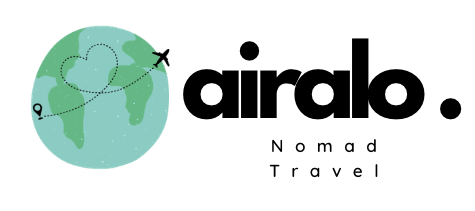
With the spread of the global internet and technological advancements, digital nomads have become a new emerging work and lifestyle, leading to increasing attention on this new group. They achieve geographical freedom through the internet and remote work. Supported by remote work and digital technology, they enjoy the geographical freedom of work and life. However, is it true that the living costs of digital nomads are as low as rumored? It seems to have different answers.
Digital nomads typically reduce living expenses by living in lower-cost areas, such as certain cities in Southeast Asia or Latin America. They can choose to rent affordable apartments or guesthouses and enjoy relatively cheap local food and services. Additionally, due to the nature of remote work, they can avoid expensive transportation and office space costs, further reducing expenses.
However, the living costs of digital nomads are not entirely low. Expenses may increase in certain high-cost areas, such as long-distance travel, health insurance, and the technology equipment and stable network required for remote work. Additionally, living in unfamiliar cultural environments may incur adaptation costs and language barriers, all of which need to be considered and addressed.
Accommodation
Of course, accommodation standards vary in different regions. Let’s look at the description from Till Musshoff’s video “How Much Does The Digital Nomad Lifestyle Cost“:
“The apartment I currently stay in, I pay about $1,000 per month, actually slightly above $1,000. I’m only staying here for a month, this is the second most expensive Airbnb I’ve stayed in. But it’s quite nice here. There’s a bathroom on the left, we have a living room work area, a TV, a very nice balcony that I like to relax in the sun. The balcony looks like this, and then there’s a place for me to sleep, of course, the whole room, and a fully equipped kitchen. Maybe this is the best kitchen I’ve ever had. Yes, I need to do the dishes, never mind me. This apartment is quite nice, we’re in Europe, so we’re not in Southeast Asia, where renting such an apartment would be much cheaper. But for Europe, I think $1,000 to rent an Airbnb like this for a month is quite good. You have to consider that everything is included in this $1,000. I have water, heating, two air conditioners here if I need them, I have internet, I never need to buy any new furniture or cleaning and cooking supplies.
But I’ve also stayed in cheaper Airbnbs. For example, in Chiang Mai, Thailand, I paid, I think around $325. In North Macedonia $450, in Kuala Lumpur $525, in Albufeira in southern Portugal $700.”
Travel Costs
This is something we cannot ignore. If you are in Europe, traveling within European countries won’t cost too much, but conversely, if you want to go to places like Southeast Asia and other Asian destinations, you need to consider a substantial travel cost.
Office Environment
The office environment is quite important for digital nomads. Some people choose shared office spaces to save a significant amount of money. Of course, if you do not enjoy socializing and prefer working alone, the accommodation conditions are crucial for you, and such costs may be higher than standard accommodation costs. Let’s look at the description from Till Musshoff’s video “How Much Does The Digital Nomad Lifestyle Cost“:
“You can of course go way cheaper by staying in a hostel in a dorm with other people, which can be amazing if you’re just starting out to travel. You want to meet new people, want to make connections, and want to learn from each other. I think that’s actually a great way to do it. For me, it wasn’t really a thing ever. I’m kind of introverted, kind of care too much about my own privacy for these kinds of things. I have come here before. I was in Saragosa, I was in Barcelona for a few days, and there I actually stayed in a hostel. But I was quite happy when that was over, honestly. Like for me, it’s just not really my thing. I can’t get into any sort of rhythm when it comes to work, and I’m just, I don’t know, I need space for myself. So yeah, for a night or two, it’s all right, but if I’m thinking like a whole month I’m going to stay in a hostel, yeah, no. I don’t want to be a digital Nomad then. But if you’re like super extroverted or super keen to meet new people, go for it. I mean, it’s going to be a lot more cheaper and maybe super fun for you. Another thing you can spend a lot of money on if you want, typically between maybe $150 and $400, is co-working spaces where you also get to meet new people and can work there. You have your dedicated workstation, fast internet, and everything. But again, that’s not something I’ve ever done.
I’ve never been to a co-working space ever in my whole journey as a digital nomad. I’ve always been working just from home from my own apartment, so I always use or look for a place where I have my own little desk, fast internet, and I can just work from there. Then sometimes I go to cafes as well to switch it up a little, so I maybe spend a little more on my apartment to have this dedicated working area. But at the same time, I’m saving a lot of money by not going to a co-working space, and I’m not really looking for something super special, super comfy. I don’t need an ergonomic chair or a second monitor or stuff like that, but just a desk and a chair, and I’m good.”
Public Transportation
Public transportation is crucial for digital nomads in unfamiliar cities. It allows for greater mobility, albeit potentially at a higher cost in some relatively inexpensive countries where options like Uber are available. This necessitates researching options beforehand for comparison. Referencing Till Musshoff’s video “How Much Does The Digital Nomad Lifestyle Cost“:
“For instance, you often rely on Uber for transport. They don’t have great public transportation, but if the place does have public transportation, I always go for that, or I just pick cities where walking works better for me as a runner. If I have to take a train or bus just to go 10 kilometers to run, I get annoyed, and that might not be one of my choices.”
Cost of Living
The cost of living is a significant aspect of a digital nomad’s expenses, offering various choices. Referring to Till Musshoff’s video “How Much Does The Digital Nomad Lifestyle Cost“:
“One of the bigger costs is food. I’d say there are two different categories. One is food you make yourself, where you go to the supermarket and buy groceries, and the other is eating out. For simplicity, I’ll put them in a separate box and roughly calculate daily food expenses at around $15. Depending on where I am, the ratio of cooking myself varies greatly. Right now in Spain, for instance, I might cook almost all the time and not eat out as much. Of course, I want to try new restaurants and explore a bit, but most of the time, I’ll prepare my own food. On the other hand, in places like Lima or Medellin, I eat out daily, at least once, often twice, because it’s so affordable.
An important thing to note here is not to fall into tourist traps where the food might not be great and the prices are higher. When I eat out, I usually pick from the menu of the day wherever I find myself, often being the only foreigner.”
In conclusion, the cost of living for digital nomads varies widely depending on personal choices, location, and lifestyle. While enjoying certain cost advantages through remote work and globalized internet, digital nomads still face a range of economic and social challenges in practical application.
This article draws on insights from the following video source:
For further questions or professional assistance with tax planning, consulting, immigration, or digital nomad services, feel free to leave a comment or contact us via our official WeChat for personalized assistance.





